 |
| (Photo provided to Poeple's Daily Online) |
Reading a map of old Beijing, a map of the walled capital of the Ming (1368-1644) and Qing (1644-1911) dynasties, you are sure to find a wonder in the world history of city planning. Standing majestically in the center of the ancient capital is the Forbidden City, the largest and best-preserved palace complex in the world, which served as the seat of imperial China's central government from the 14th century to the early 20th century. The Forbidden City can be compared to the heart of a human being. The city's axial, the "spine," runs straight from Yongdingmen Gate in the south to the Bell-Drum Towers in the north, through the Forbidden City. At either side of the axial are streets, hutongs (backstreet lanes and alleys) and structures arranged in symmetrical order, making the city look like a chessboard. When I was in Washington, I found the capital city of the United States has some resemblance with old Beijing in city planning. Looking down from the top of Washington Monument, I found the Capitol, Lincoln Memorial and Reflecting Pool in a neat line, with libraries, museums and other buildings standing at either side of it. These are stone structures. In comparison, old buildings in Beijing are structurally wooden.
The history of Beijing dates from more than 3,000 years ago, and for some 850 years spanning the Yuan (1271-1368), Ming and Qing dynasties, the city served as the national capital. Next to those imposing imperial structures and ancient temples, those narrow streets and alleys collectively known as hutong used to be a most striking feature of the ancient capital. Hutongs are formed by lines of traditional courtyards known as siheyuan. Many neighborhoods or hutongs were formed by joining one siheyuan to another, and then a neat square was formed by joining one hutong to another. We may safely say if hutongs disappear, gone will be the ancient capital known as Beijing.
Back in early 1949, toward the end of the last civil war fought on the Chinese mainland, the Communist-led People's Liberation Army (PLA) took over Beijing peacefully with surrender of the defense forces of the Kuomintang (KMT) or nationalist regime. The PLA had prepared to take the city by force in case peace negotiations with the KMT army failed. Meanwhile, the PLA command had plans to minimize the damage likely to be done to the ancient city. For that purpose, the PLA sought advice from Professor Liang Sicheng (1901-1972), a most prominent Chinese architect and author of China's first modern history on Chinese architecture. Liang marked the most valuable structures on a map, asking the PLA not to bombard them if the PLA had to fight to capture the city. The PLA representative assured Liang of compliance.
Unfortunately, ill-fate befell ancient structures and hutongs in Beijing shortly after the birth of New China on October 1, 1949. Professor Liang and other experts called for preserving the ancient capital in its entirety and they appealed for having a new Beijing built in the western suburbs to house the various departments of the new government. The new government, however, rejected the appeal, its leaders insisting that economic development be the top priority and that the existing infrastructure in the capital city be used as far as possible. Massive demolition was to follow for construction space and to the regret of many, a lot of ancient structures disappeared –– the city walls, memorial archways, temples, ancient residences, etc.
Beijing has by now changed beyond recognition. Changes began accelerating in the early 1990s, and for many years, the city looked exactly like an immeasurably large construction site. Beijing became increasingly modern as new business, office and residential buildings kept springing up on what used to be hutongs and buildings of cultural interest. Looking down from atop the Jingshan Hill, the commanding height of old Beijing that faces the north gate of the Forbidden City, one will find today's Beijing a vast expanse of high-rise, ultra-modern buildings. Only the Forbidden City down the hill can testify to the glory Beijing once enjoyed as an ancient Chinese capital, along with a few other ancient structures that have survived the destruction such as the Temple of Heaven and the Summer Palace. Over the decades, the number of hutongs has dropped dramatically as they are demolished to make way for new roads and buildings. As a photo journalist, I felt duty-bound to use my camera to record the city's disappearing history at a time when demolition of hutongs was gathering momentum. Whenever I had time to spare, I would cycle to different parts of the city to take photos of those hutongs to be demolished. One early winter day in 1993, I happened to pass the southeast corner of Xuanwumen intersection near Xinhua News Agency, where there used to be a web of hutongs. My curiosity was aroused at the sight of the Chinese character chai (to be demolished) on many walls there. I entered the area and found many courtyards had already been demolished. Children were playing on mounds of debris, which posed a sharp contrast with those newly built high-rises just a few steps away. When I went to the place a second time, all the hutongs and courtyards were gone. A huge SOGO building and an office complex now stand on those demolished courtyards, once home to hundreds of families.
To be fair, most hutong residents were in need of better and more spacious housing. For many years in the past, it was not rare for a family of two or even three generations to live in one room just a dozen square meters large. From the 1970s to the 1990s, my family lived in one room in an improvised dormitory building. For four of us, the living space was no more than a dozen square meters before we moved into a larger room about 30 square meters in floor space. Despite that, we were considered fortunate in comparison with those living in dazayuan – siheyuan courtyards often with dozens of families living in it. Each family in a dazayuan normally had just one room, and families in the courtyard had just one water tap and one privy. When studying at the RUC, I was guest at the homes of several classmates in dazayuan courtyards and occasionally, I would stay there for the night. All those courtyards were in a mess, with things not in use jumbled up wherever there was space for them, making it difficult for people and bicycles to move in and out. In a hutong in Chongwen District, I visited a family of three living in a room barely larger than a cubicle. The middle-aged couple had an unmarried daughter in her 20s. Whenever the girl had a wash, her parents had to stay away, out in the street.
Quite a lot of hutong residents were happy to move into apartments fitted with modern conveniences. But there were people who were reluctant to leave. For them, hutongs, where their families had lived for generations, were so dear. "No, I don't want to leave; I want to stay," one tearful man in his 80s told me. "I've got use to life here, and I don't want to go anywhere else."

 Heavy cargo flights taking off
Heavy cargo flights taking off In pictures: PLA's digital equipment
In pictures: PLA's digital equipment 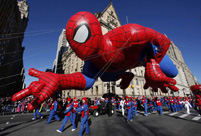 Americans mark Thanksgiving Day with parades
Americans mark Thanksgiving Day with parades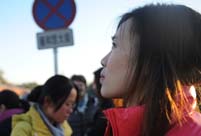 Love searching stories in cities
Love searching stories in cities 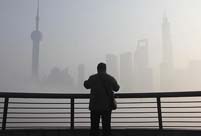 Shanghai shrouded in heavy fog
Shanghai shrouded in heavy fog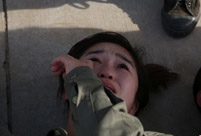 Office ladies receive ‘devil’ training in mud
Office ladies receive ‘devil’ training in mud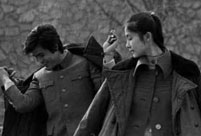 Changes in Chinese dancing culture
Changes in Chinese dancing culture  Highlight of Mr Bodybuilding and Miss Bikini Contest
Highlight of Mr Bodybuilding and Miss Bikini Contest 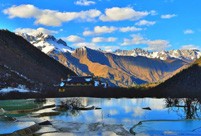 Picturesque scenery of Huanglong, NW China
Picturesque scenery of Huanglong, NW China China's moon rover, lander
China's moon rover, lander Spring City Kunming witnesses snowfall
Spring City Kunming witnesses snowfall Citizens rush to buy cars
Citizens rush to buy cars  Life in an ancient academy
Life in an ancient academy Best photos of the week
Best photos of the week White-collars, black eyes
White-collars, black eyesDay|Week|Month